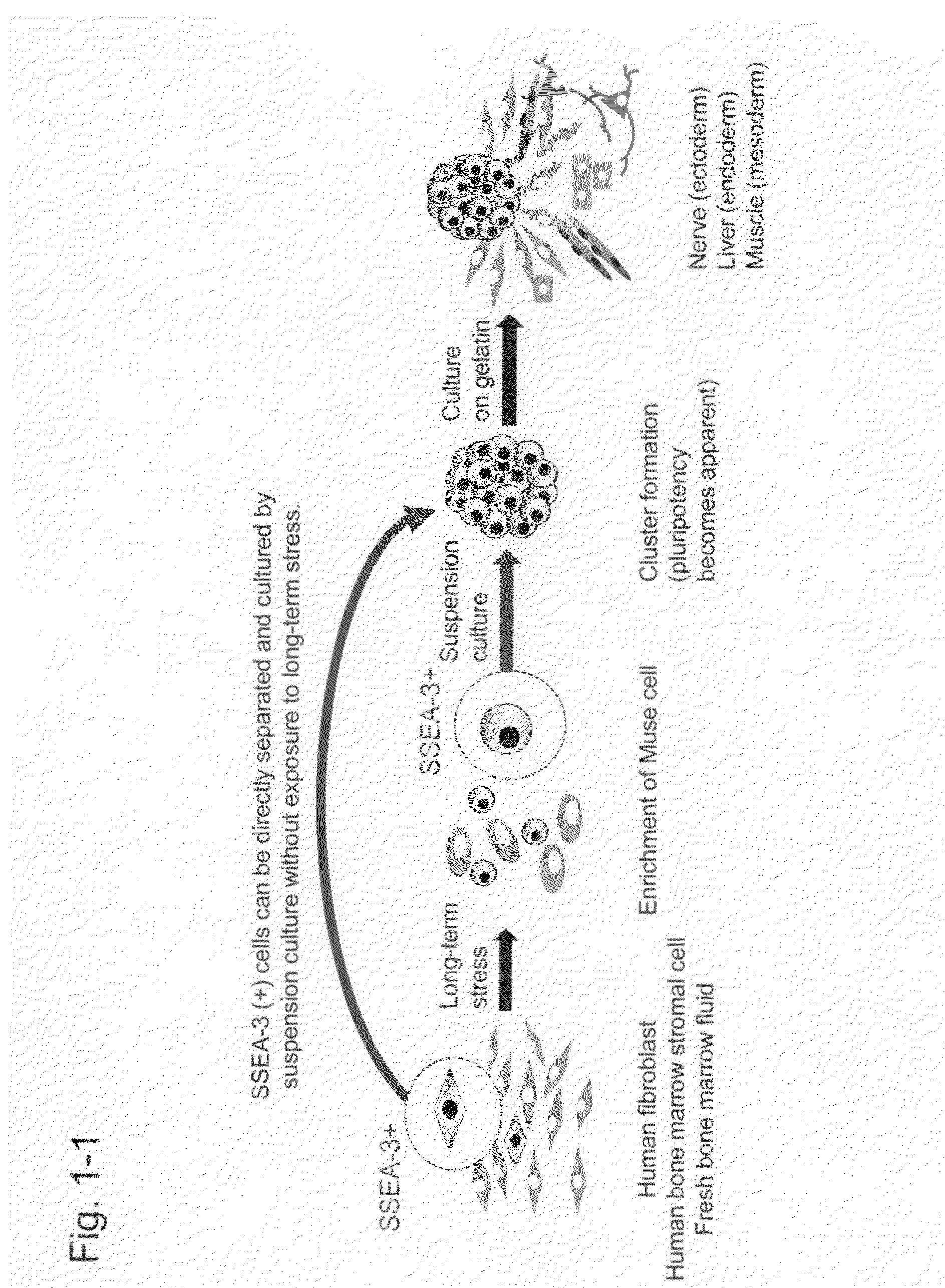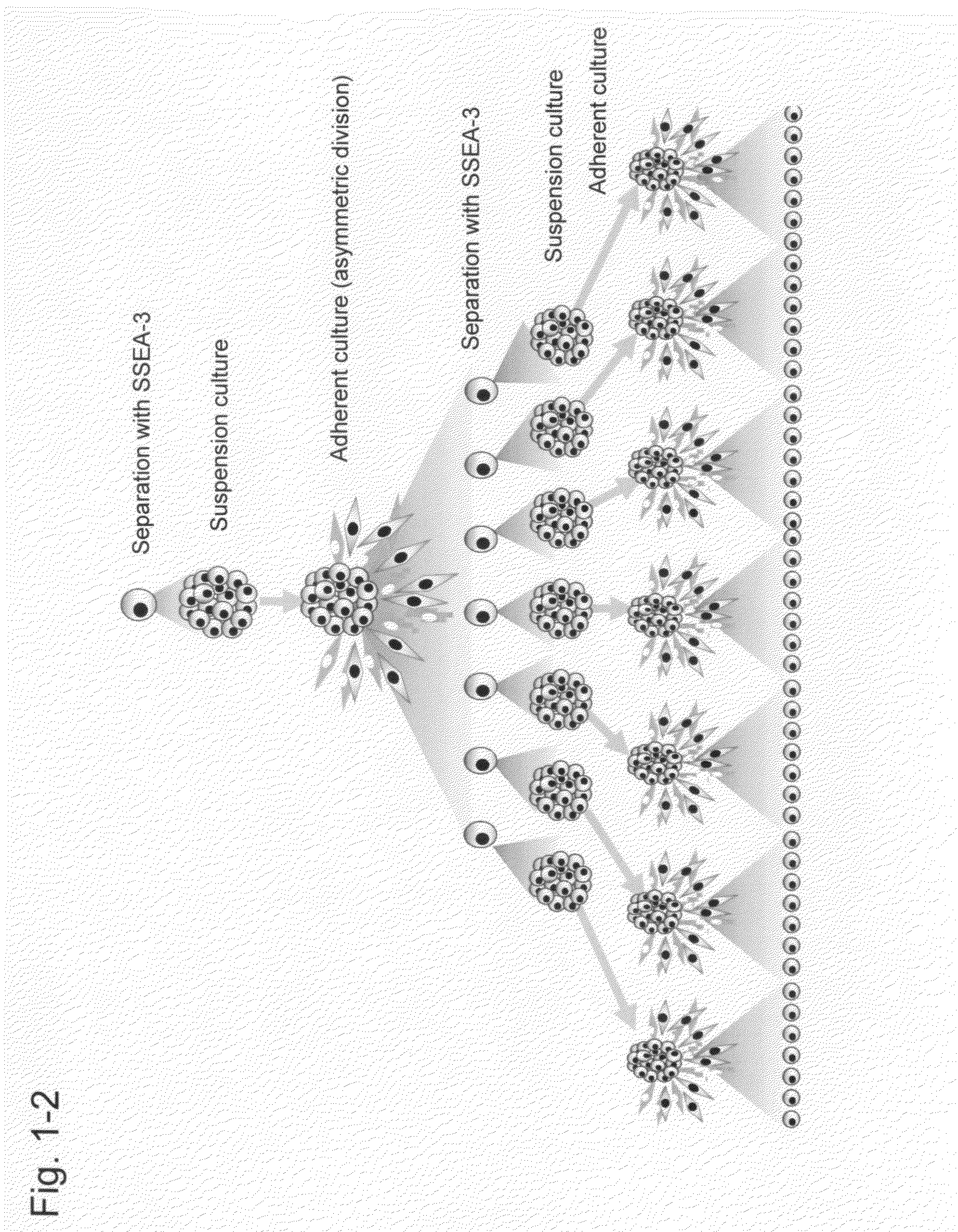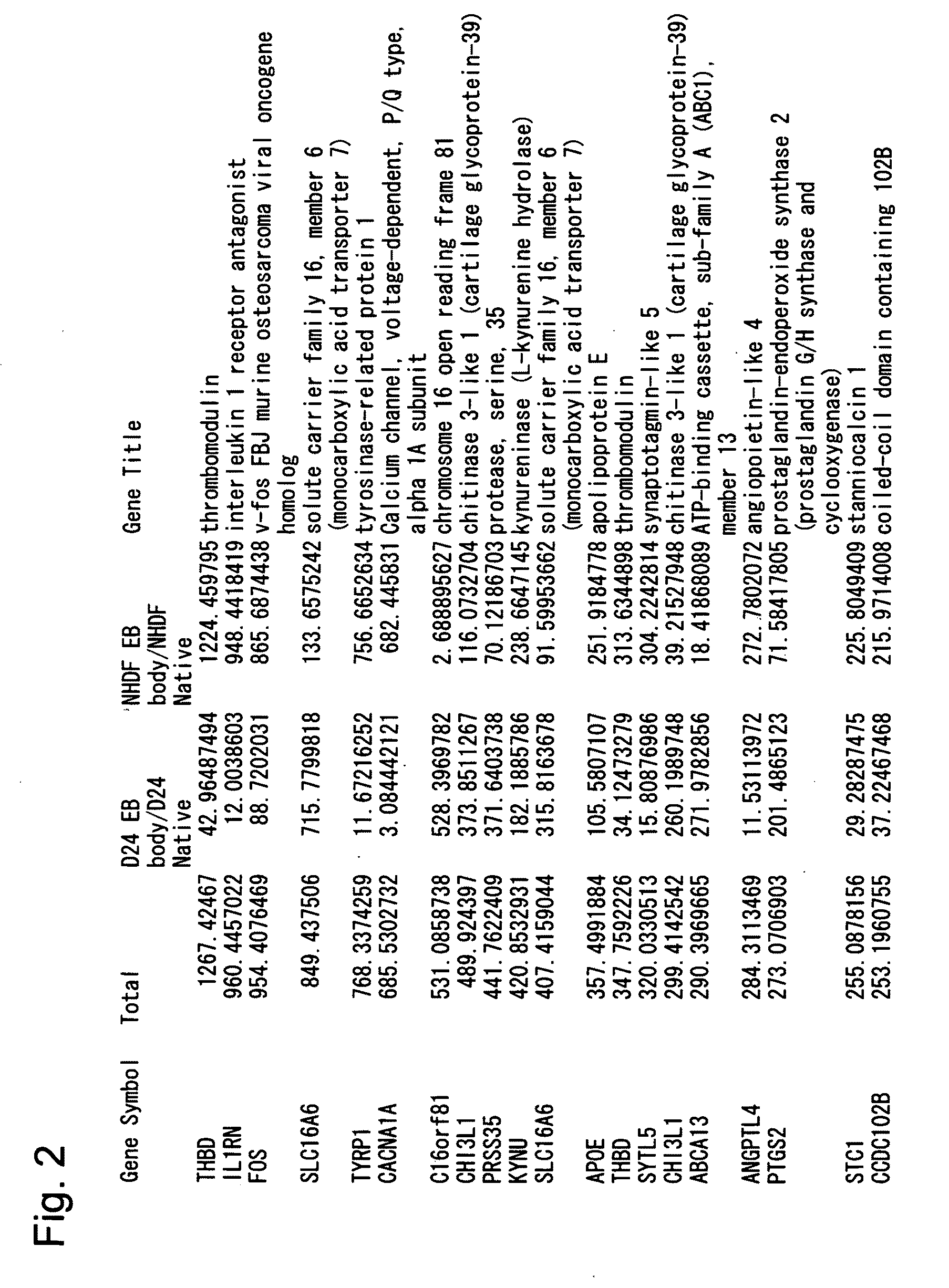Pluripotent stem cell that can be isolated from body tissue
a stem cell and body tissue technology, applied in the field of body tissuederived pluripotent stem cells, can solve the problems of unreliable stem cell differentiation, limited pluripotency, and low tissue regenerative capacity, and achieve the effect of reducing the number of pluripotent stem cells in mature mammalian bodies and reducing the number of pluripotent stem cells
- Summary
- Abstract
- Description
- Claims
- Application Information
AI Technical Summary
Benefits of technology
Problems solved by technology
Method used
Image
Examples
example 1
Preparation and Characterization of Muse-Enriched Cell Fractions and M-Clusters
Materials and Methods
The following cells are used in Examples.
Two strains of human dermal fibroblast fractions (H-fibroblasts) and four strains of human MSC (bone marrow stromal cell) fractions (H-MSC fractions) were used as mesenchymal cells. Human fibroblast fractions were (1) H-fibroblast-1 (normal human fibroblast cells (NHDF), Lonza), and (2) H-fibroblast-2 (adult human dermal fibroblasts (HDFA, ScienCell, Carlsbad, Calif.)). Human MSC fractions, H-MSC-1, -2 and -3 were obtained from Lonza, and H-MSC-4 was obtained from ALLCELLS. Human MSC fractions are specifically described in Pittenger, M. F. et al. Science 284, 143-147 (1999); Dezawa, M. et al. J Clin Invest 113, 1701-1710 (2004); and Dezawa, M. et al. Science 309, 314-317 (2005).
Cells were cultured at 37° C. in α-MEM (alpha-minimum essential medium) containing 10% FBS and 0.1 mg / ml kanamycin with 5% CO2. Cells cultured directly after their shipm...
example 2
Characterization of Muse Cells Isolated Using SSEA-3
Examination in Example 1 revealed that SSEA-3 (+) cell fractions obtained by FACS had the properties of pluripotent stem cells; that is, they were Muse cells (J, K, and the like above). Furthermore, in vitro differentiation ability and in vivo differentiation ability were examined using isolated SSEA-3 (+) cells and then Muse-derived iPS cells were established.
1. Examination of In Vivo Differentiation Ability by Transplantation of Cells into Damaged Tissues
SSEA-3 (+) Muse cells labeled with GFP (green fluorescent protein)-lentivirus were isolated and then transplanted via intravenous injection into immunodeficient mice (NOG mice) with damaged spinal cord (Crush injury of spinal cord), damaged liver (intraperitoneal injection of CCl4, fulminant hepatitis model), or damaged gastrocnemius (muscle) (cardiotoxin injection). Human skin cell-derived Muse cells were labeled with GFP (green fluorescent protein)-lentivirus (Hayase M et al., ...
PUM
 Login to View More
Login to View More Abstract
Description
Claims
Application Information
 Login to View More
Login to View More - R&D
- Intellectual Property
- Life Sciences
- Materials
- Tech Scout
- Unparalleled Data Quality
- Higher Quality Content
- 60% Fewer Hallucinations
Browse by: Latest US Patents, China's latest patents, Technical Efficacy Thesaurus, Application Domain, Technology Topic, Popular Technical Reports.
© 2025 PatSnap. All rights reserved.Legal|Privacy policy|Modern Slavery Act Transparency Statement|Sitemap|About US| Contact US: help@patsnap.com



